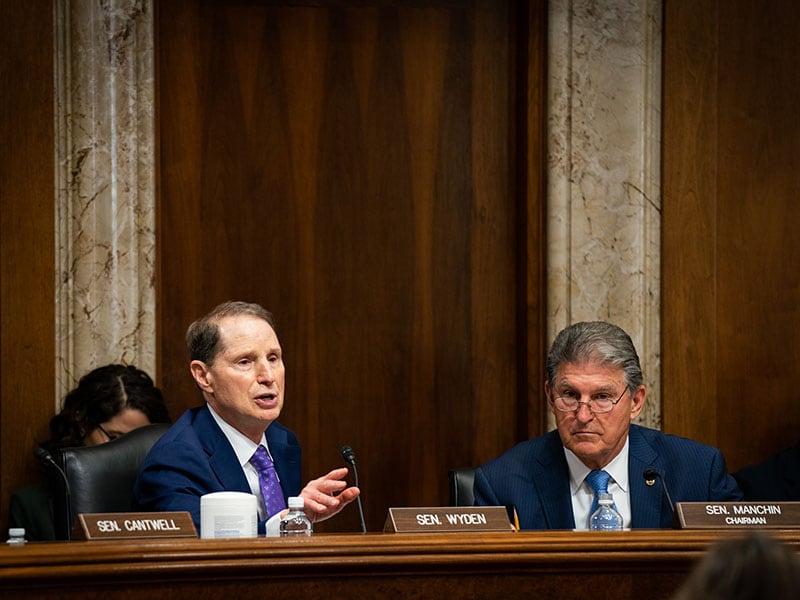
50 years in the making: Why it took US Congress so long to act on climate
In 1969, President Richard Nixon's adviser Daniel Patrick Moynihan wrote a memo describing a startling future. Fifty-three years later, Congress is on the cusp of finally responding to what Moynihan had termed 'the carbon dioxide problem'
 Sens. Ron Wyden (D-Ore.), left, and Joe Manchin (D-W.Va.) at a hearing about U.S. infrastructure on Capitol Hill in Washington, June 24, 2021. The Senate’s historic climate legislation avoided the political pitfalls of past legislative attempts by offering only incentives to cut climate pollution, not taxes. (Sarahbeth Maney/The New York Times)
Sens. Ron Wyden (D-Ore.), left, and Joe Manchin (D-W.Va.) at a hearing about U.S. infrastructure on Capitol Hill in Washington, June 24, 2021. The Senate’s historic climate legislation avoided the political pitfalls of past legislative attempts by offering only incentives to cut climate pollution, not taxes. (Sarahbeth Maney/The New York Times)
WASHINGTON — In 1969, President Richard Nixon’s adviser Daniel Patrick Moynihan wrote a memo describing a startling future. The increase of carbon dioxide in the atmosphere caused by burning oil, gas and coal, Moynihan wrote, would dangerously heat the planet, melt the glaciers and cause the seas to rise. “Goodbye New York,” Moynihan wrote. “Goodbye Washington, for that matter.”
Fifty-three years later, Congress is on the cusp of finally responding to what Moynihan termed “the carbon dioxide problem.”
On Sunday, Senate Democrats muscled through a $370 billion bill designed to move the country away from fossil fuels and toward solar, wind and other renewable energy. If the House passes the legislation later this week as expected, it will be the nation’s first major climate law, coming as scientists warn that nations have only a few remaining years to make deep enough cuts in carbon dioxide to avoid planetary catastrophe.
Once enacted, the new law is projected to help cut the nation’s greenhouse pollution by roughly 40% below 2005 levels by the end of this decade. That’s not enough to avert the worst effects of a warming planet, but it would be a sizable down payment and the largest climate action ever taken by the United States.
“Finally, now we have crossed a major threshold,” said former Vice President Al Gore, who as a lawmaker held the first congressional hearings on the subject in 1982 and shared the 2007 Nobel Peace Prize with climate scientists for their joint efforts to spread awareness about climate change. “I did not for a moment imagine it would take this long.”
©2019 New York Times News Service







